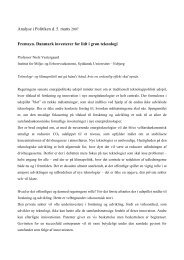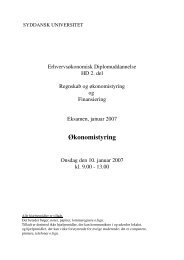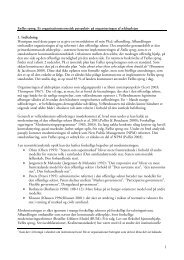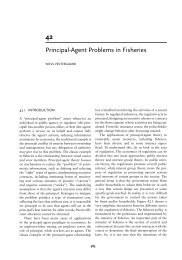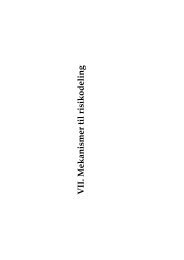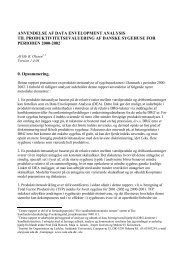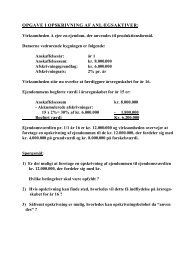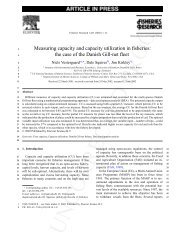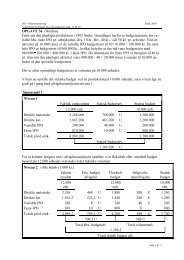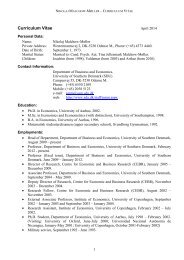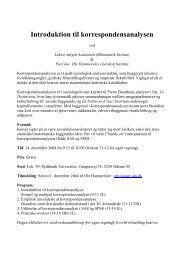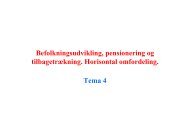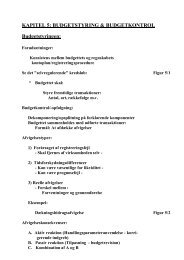Development of Parties and Party Systems in ... - lah@sam.sdu.dk
Development of Parties and Party Systems in ... - lah@sam.sdu.dk
Development of Parties and Party Systems in ... - lah@sam.sdu.dk
- No tags were found...
Create successful ePaper yourself
Turn your PDF publications into a flip-book with our unique Google optimized e-Paper software.
Kaczynski, ROP Jan Olszewski <strong>and</strong> ZChN Hanna Gronkiewicz-Walz. In Solidarity a group led byZbigniew Wrzodak broke the party l<strong>in</strong>e <strong>and</strong> supported Jan Olszewski. Thus, evidence showed thatwithout greater unity on the Right the “power monopoly” <strong>of</strong> the post-communist would not bebroken.22 different parties <strong>and</strong> organizations subscribed the declaration <strong>of</strong> the creation <strong>of</strong> Election ActionSolidarnosc (AWS), at the 1997 election AWS was composed <strong>of</strong> no less than 38 different parties<strong>and</strong> organisations. As noted earlier, AWS can best be considered as a negative alliance, first as anembryonic, later as a proto-political party with trade union Solidarity as the organizational core.Dur<strong>in</strong>g the election campaign the attempt to mobilise the old Solidarity ethos succeeded to a largeextent, <strong>and</strong>, most important, the waste <strong>of</strong> votes was substantially reduced. At the 1993 electionthose groups, which later formed AWS, had obta<strong>in</strong>ed 29 pct. <strong>of</strong> the votes, only 4 pct. less than at the1997 election, but at the 1997 election enough for the Right to obta<strong>in</strong> the majority <strong>in</strong> parliament. Asthe right w<strong>in</strong>g “The Movement for Build<strong>in</strong>g UP Polan” (ROP) lost votes to AWS the real sw<strong>in</strong>g tothe Right was rather modest.The liberal Freedom Union (UW), still work<strong>in</strong>g outside AWS, constituted the social liberal parts <strong>of</strong>the Solidarity movement The Workers Union (UP), the centre-left orientated part <strong>of</strong> Solidarity hasbeen supported by reform-m<strong>in</strong>ded former communists. Nevertheless at the 1997 election AWSbecame the greatest s<strong>in</strong>gle party with support from about one third <strong>of</strong> the electorate, more thanpredicted <strong>in</strong> the op<strong>in</strong>ion polls before the election which showed almost “dead heat” between left <strong>and</strong>right.Thus, from the outset AWS can be considered as a broad right w<strong>in</strong>g negative election alliance, withstrong elements <strong>of</strong> anti-politics, without the old “self-limitation” <strong>and</strong> with close l<strong>in</strong>ks to thepresident (Walesa) <strong>and</strong> with strong support from the army <strong>and</strong> the church hierarchy.2.7. The organisational structure <strong>of</strong> AWSFrom the outset AWS’ different political groups <strong>and</strong> ”legs” watched zealously over their ownidentity. Several acted as veto-groups even obstruct<strong>in</strong>g even already adopted decisions <strong>and</strong> preventpassage <strong>of</strong> new. The prospects to form one united right w<strong>in</strong>g party with a high <strong>in</strong>stitutionalisation<strong>and</strong> a common party culture were dark. Plans circulat<strong>in</strong>g <strong>in</strong> the spr<strong>in</strong>g 1995 to create an”<strong>in</strong>dependent trade union party” – only based on the trade union Solidarity - were impossible tocarry through. The experience from the 1993 election, where the trade union Solidarity lost all theseats <strong>in</strong> parliament, was frighten<strong>in</strong>g. The right w<strong>in</strong>g parties were simply ”doomed to cooperate”.As noted above, the trade union Solidarity was AWS’ organisational nucleus <strong>and</strong> MarianKrzaklewski the political front figure. Tactical considerations, not ideological unity, were mostdecisive. The different political groups on the Right could easily agree on the anti-communistorientation with the aim to remove the ”post-communists” from power. Many <strong>in</strong> AWS expressedthe op<strong>in</strong>ion that the round table decisions gave the ”post-communists” too much political <strong>in</strong>fluence.Also the support to the church was strong, e.g. <strong>in</strong> questions about abortion <strong>and</strong> religious <strong>in</strong>struction<strong>in</strong> schools. The close l<strong>in</strong>ks to the church not only separated Solidarity from the ”post-communists”,but also Solidarity from its coalition partners, e.g. liberals <strong>and</strong> moderates <strong>in</strong> the Freedom Union”(UW).55



